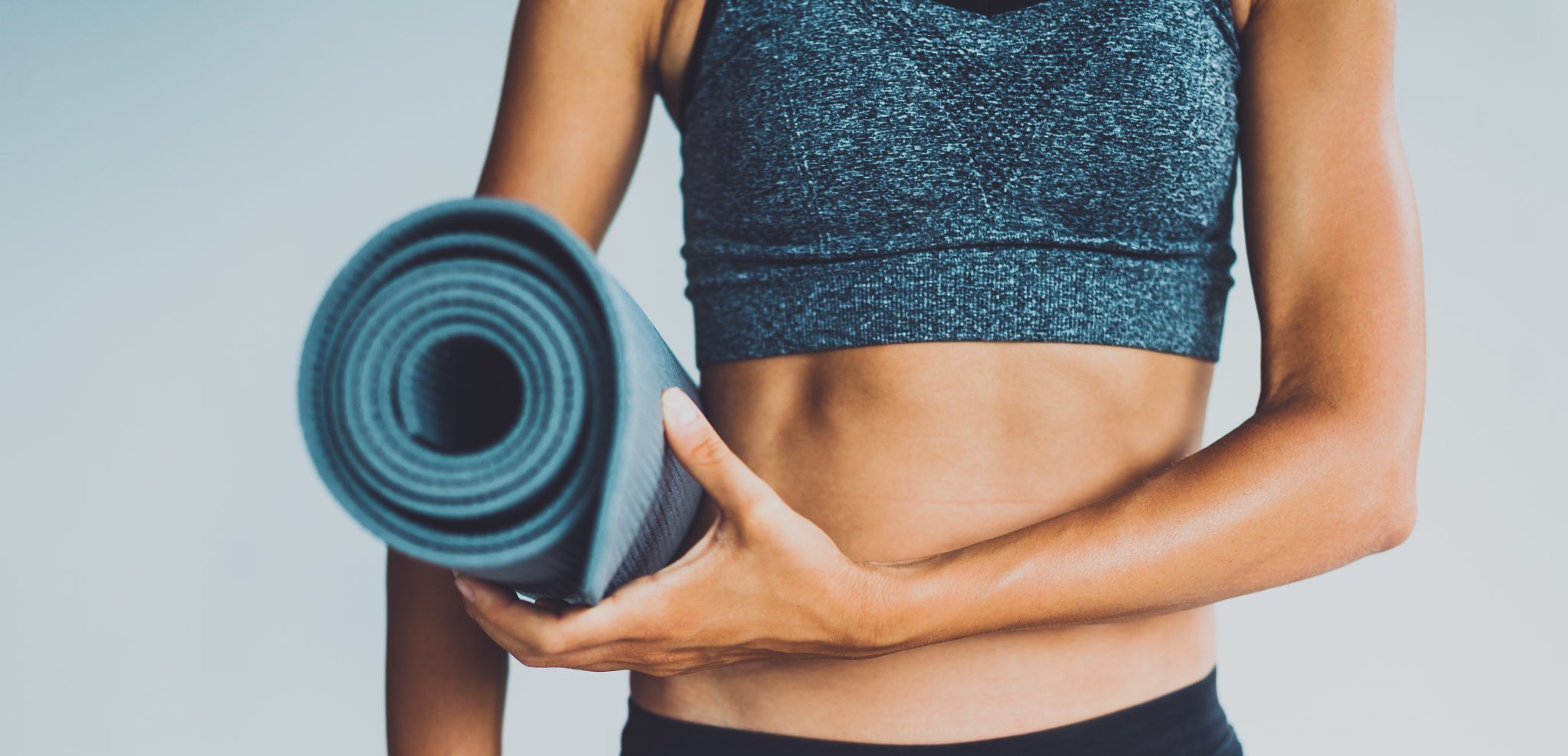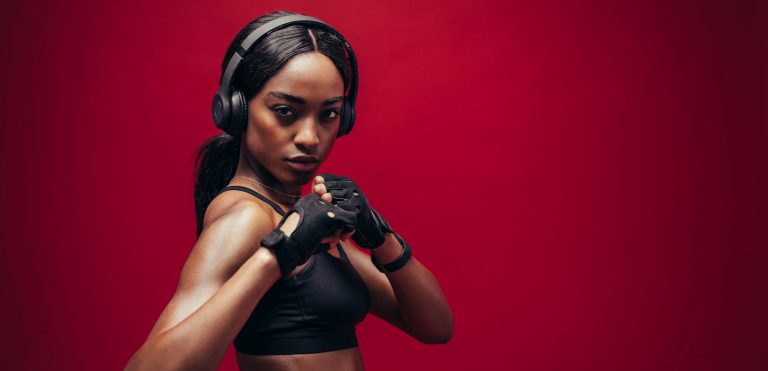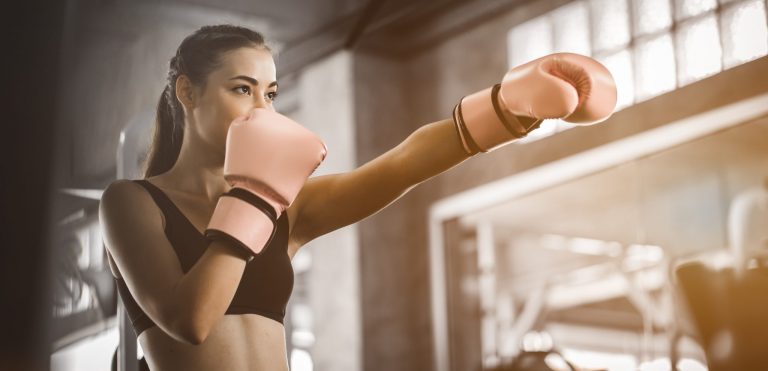If you’ve ever been even the least bit interested in both practices, it’s likely that you have noticed some similarities between them. Both have the power to tone the body, alleviate stress and improve the sense of well-being, and both are worthy of our attention. In reality, regardless of their many overlaps, yoga and Pilates can only complement but never copy each other.
As proof of that, let’s have a look at each practice individually to see the similarities and differences between Pilates and yoga.
Briefly about yoga
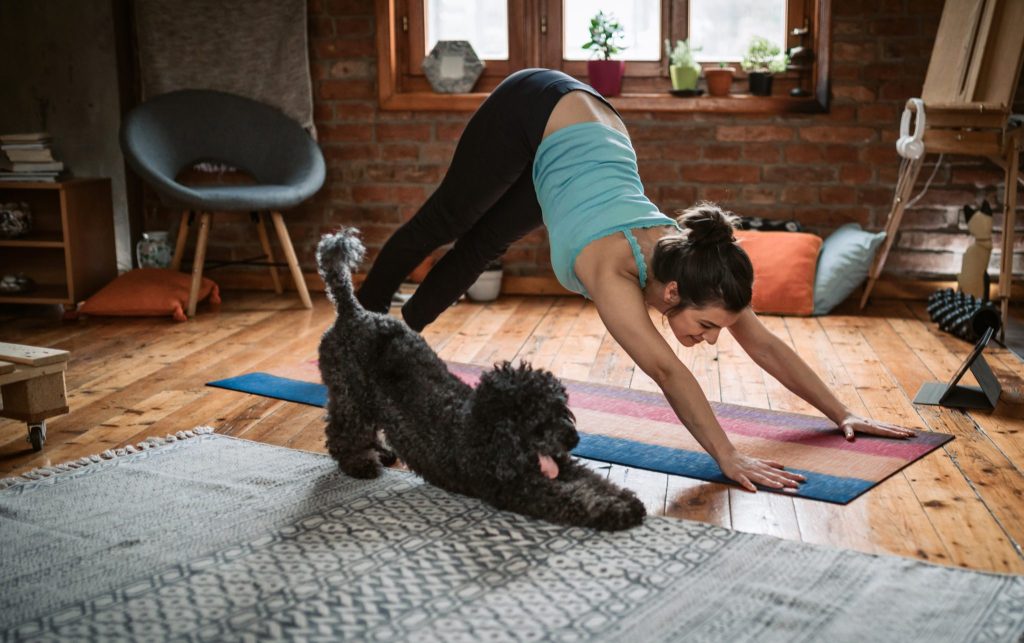
Yoga came around as a sacred practice focused on balancing the mind, body and spirit. It originated in India circa 5th century BC.
The postures you do in yoga (asanas) promote flexibility and balance, as well as boosting blood flow throughout the body. Consecutive change from one posture to the next, all while remaining connected to the breath can be quite a challenge, but the more you practice yoga, the easier it gets.
Breath is part and parcel of yoga as it helps quiet the mind and remain in the present.
It is a transformative practice and those who stick to it often say it helps them improve balance, stamina, flexibility, boost energy levels, and mental health. There are many varieties of yoga, that’s why it is so accessible and attracts many followers.
History and essence of Pilates
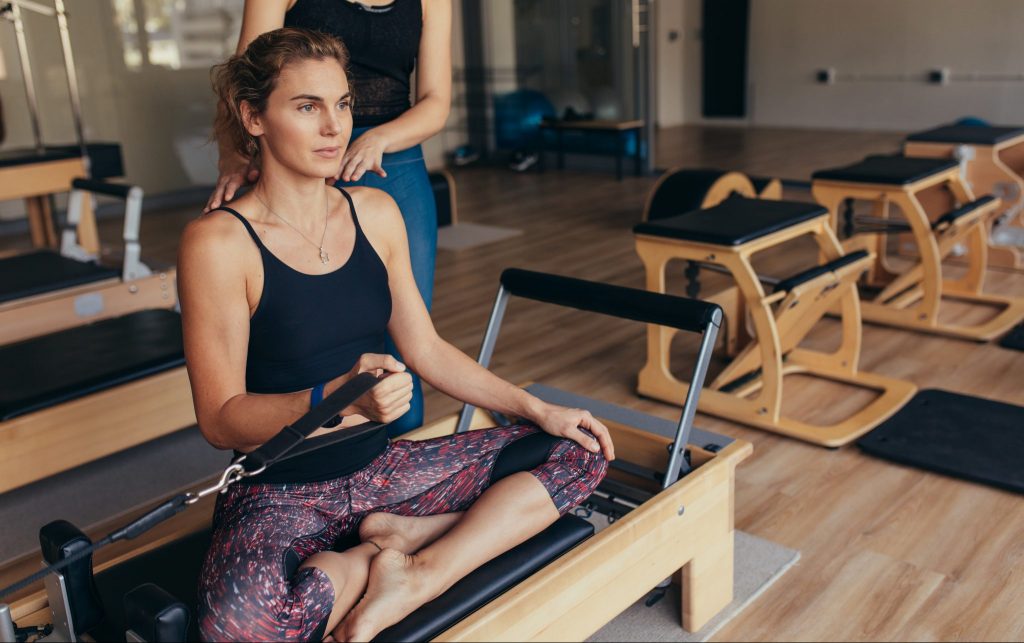
Not everyone knows it, but Pilates was named after its inventor Joseph H. Pilates, who developed this exercise system back in the early 1900s. It became very personal to him since he suffered from asthma and rickets as a child and was looking for ways to strengthen his sickly body and improve his health.
Joseph Pilates used to refer to his method as the study of control and believed that practicing it people would get more power over their body and mind, strengthen their core and, finally, be able to live life to the fullest.
Not unlike yoga, Pilates focuses on breathing, concentration and finding the center. But mainly it centers around core muscles strength and ways to increase the efficiency of movement. All these principles help the practitioner build physical force without stressing the body.
Pilates is recommended for the treatment of chronic low back pain and is great for overall physical therapy as, in the long run, it protects practitioners from future injury and pain.
How the two are similar?
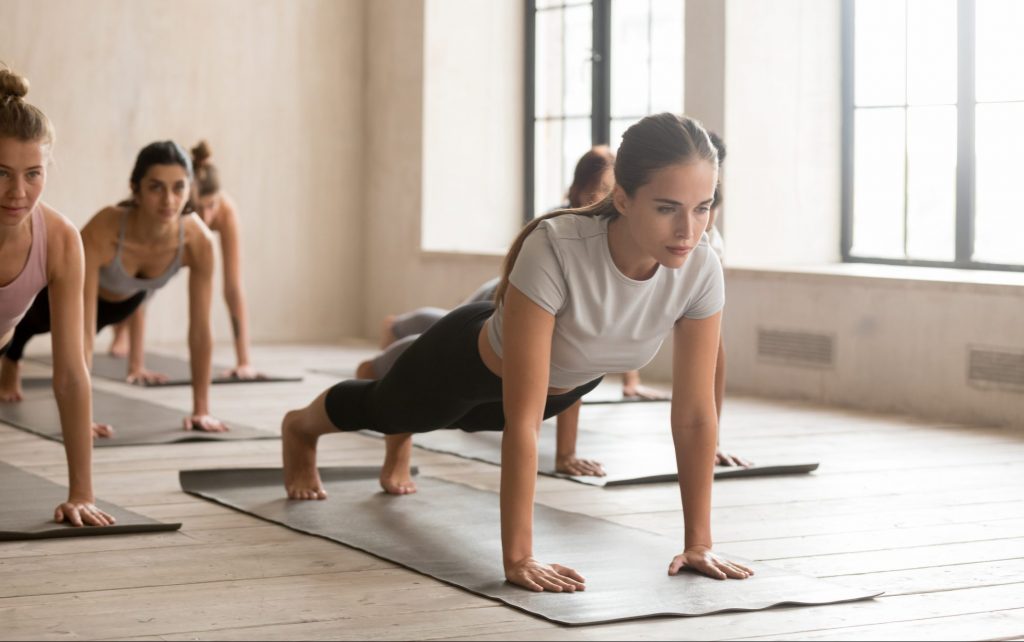
Which one to choose is a matter of preference, of course. And that’s why, in order to decide that, you should give both a try. But before you do, let us take a look at the main similarities between these two practices.
1. Many yoga and Pilates movements look a lot alike.
Actually, J. Pilates studied yoga for quite some time and used it as an inspiration. He borrowed many techniques from yoga, gymnastics and dancing. The same as when yoga developed it has borrowed some techniques from fitness.
2. Breathing is important for both
Both practices encourage you to focus on your breath and on the present moment. You learn to breathe properly and build your cardio-respiratory endurance.
3. Yoga and Pilates are two mindful practices
They both focus on the mind/body balance, movement and cultivate greater body awareness.
4. Have similar effect on physique
Both boost joint mobility, improve posture and flexibility. Also, the two practices focus on sculpting the abdominals and stabilizing muscles of the torso.
How is Pilates different from yoga?
And while there are obvious similarities between the two practices, the differences, however, tend to outweigh them.
1. Distinct philosophies
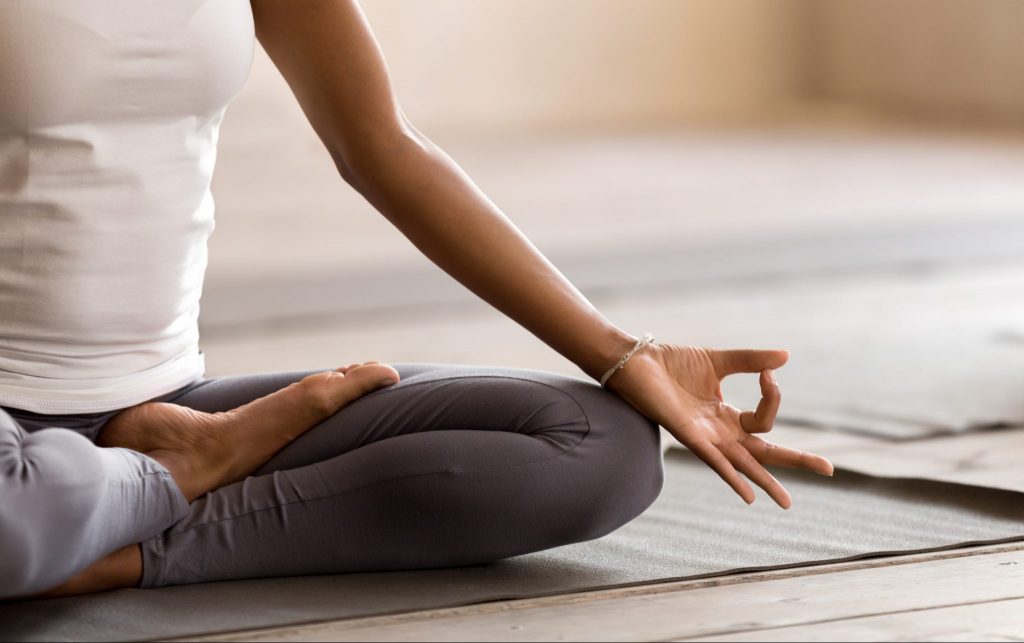
Perhaps, the main difference between yoga and Pilates is their primary intent. As you know already, Pilates is a relatively modern practice which hasn’t evolved on its own – it’s a combination of different activities. It was originally designed to build endurance, improve physical and mental wellness.
Meanwhile yoga is a spiritual teaching that dates back to the 5th century BC. It is not just a physical workout that focuses on the precision and coordination of movement. Posture practice, balance, breathing control and flexibility are just small parts of a much bigger picture. Yoga helps become more connected to our inner selves and form a deeper spiritual connection with everything that surrounds us. Yoga is more than just a practice – it’s a way of life.
2. Movement vs. balance
Pilates practice starts with small ranges of motion gradually building up to a full-range joint movement. In yoga, on the other hand, practitioners hold postures for small periods of time concentrating more on their balance. Thus, Pilates isn’t harder than yoga, but it is more about movement, and yoga is more about endurance.
There is no doubt that over time both practices help increase flexibility in the entire body. But that’s not the half of it! Yoga increases the range of motion, sense of well-being, and helps maintain inner balance. And Pilates improves core strength – this means the torso, abs and lower spine – and helps build lean and strong muscles.
3. Different focus on breathing
Following certain breathing patterns and techniques is extremely important in both yoga and Pilates. But there are, of course, some differences.
Pilates pays more attention to the powerful exhales for the effort of most exercises. The exhales activate abdominal muscles at all times and coordinate the precision of movement.
Yoga breathing helps relieve the pressure and calm the nervous system. Its primary goal is to help us reconnect with our inner self and focus on the mind.
In Pilates we mostly use our diaphragm for breathing, whereas yoga puts an emphasis on abdominal, or belly, breathing.
There are reasons, of course, why the two breathing styles are so different. Pilates’s main goal is to prepare you for active movement and strengthen the core with the help of breathing. Yoga, on the other hand, uses breathing to help decompress and prepare for meditation.
4. Duration and structure
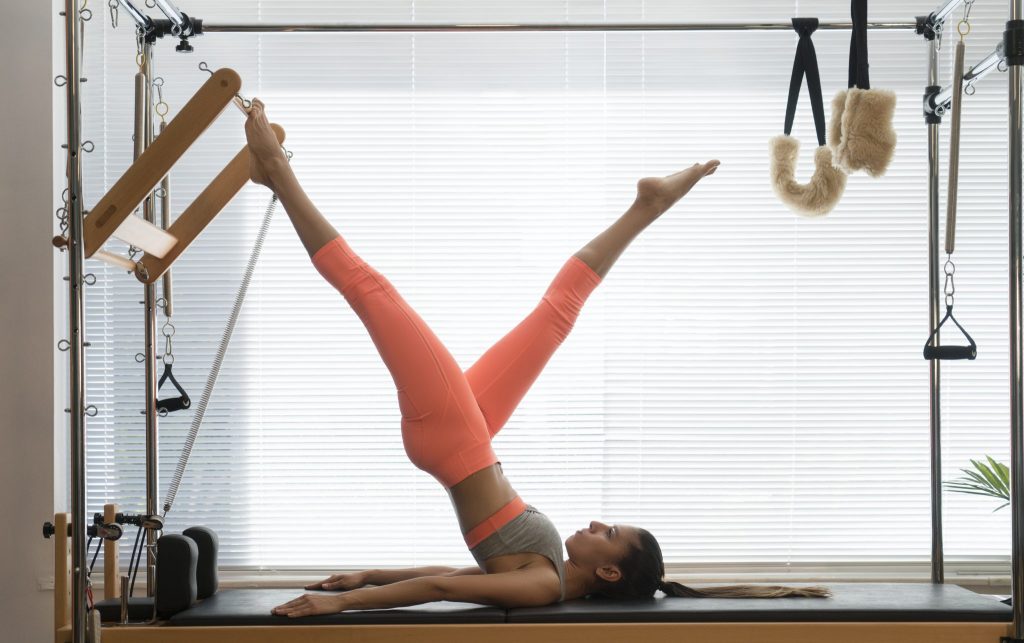
A typical yoga practice lasts from 60 to 90 minutes and it focuses on body and mind balance. A session of Pilates is usually 60 minutes tops, and it puts a strong emphasis on fitness and physique. This is exactly why some feel that yoga has a soothing effect, while Pilates seems to be more energizing.
Class structures are not alike either. A typical yoga practice includes postures (or asanas), pranayamas (or breath work), energy sequences, relaxation and, of course, meditation as its foundation. During a practice, one asana flows into another moving from less complicated to more challenging. Overall structure largely depends on the school of yoga (whether it’s Bikram, Ashtanga, Vinyasa, etc.). The styles vary but all of them, with no exception, are based on Hatha yoga – the forefather of all yogas.
Pilates, too, has different styles, as well as it has evolved over time. Now, many classes are taught without using the classic Pilates method. The novelty activities can be as effective and dynamic, but still they bear only a vague resemblance to the original which inspired them all.
Here we talk about the traditional form of Pilates which helps create a strong and stable core to use as a foundation for movement. Because of this, a strong emphasis is put on training the abdominal muscles and all exercises are built around this principle. These other six components are the integral parts of every Pilates practice:
- Finding stability
- Concentration
- Deep breathing
- Control of the process
- Precision of movement
- Gradual flow between movements
Also, while yoga is exclusively a mat-based activity, Pilates can be practiced both on the mat and on machines. The latter offer support and provide necessary resistance.
Bottom line
Understanding the differences and similarities between yoga and Pilates will help you decide which one is the right one for you. Both present a perfect combination of breathing techniques, exercise, mind and body awareness.
If you still can’t decide which one is better for you, you can try both and experience the benefits of each of them for yourself. And if you don’t really know how to start or can’t really squeeze a practice into your busy schedule, check out plentiful online tutorials or download apps with guided classes. One of the best things about Pilates and yoga is that you can practice both on the go, all you need is a mat and motivation.

